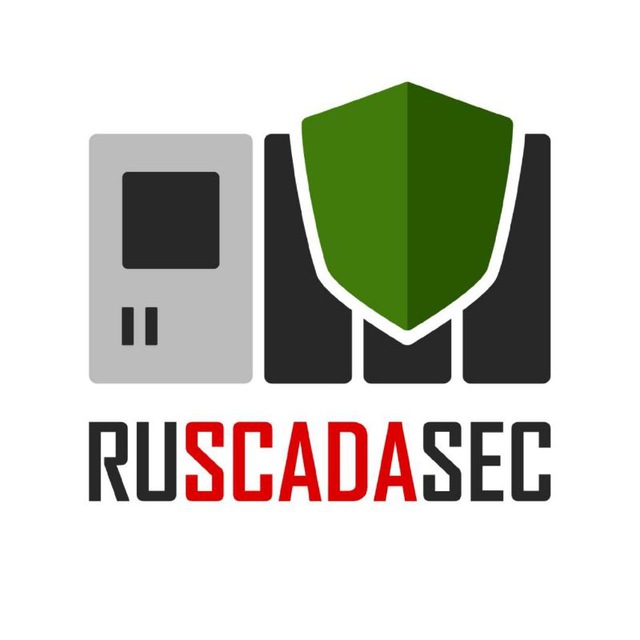AL
Size: a a a
2020 July 14
А там говорится, что особенности оценки соответствия устанавливаются Правительством или Президентом. Если бы у нас был Указ, Закон или ПП, в котором бы говорилось о сертификации СрЗИ и СКЗИ, то вопросов бы не было
CD
SAP is widely used in CI. Time to patch
https://us-cert.cisa.gov/ncas/alerts/aa20-195a
https://us-cert.cisa.gov/ncas/alerts/aa20-195a
АС

А в статье 5 184-ФЗ
AL
Если мы посмотрим, кем вносилась поправка про "уполномоченным им федеральными органами...", то увидим, что вносилось это Росатомом под оценку соответствия для Росатома. И именно по этой причине ФСТЭК, ФСБ и другие регуляторы по ИБ никогда не упоминают этот фрагмент статьи 5-й
AL
А иначе они могли бы на 100% уверенно утверждать, что именно они устанавливают обязательность сертификации и все идут лесом. Но нет... Никто так не утверждает
АС
Прикольно. Спасибо за разъяснение )
SP
Alexey Lukatsky
Если мы посмотрим, кем вносилась поправка про "уполномоченным им федеральными органами...", то увидим, что вносилось это Росатомом под оценку соответствия для Росатома. И именно по этой причине ФСТЭК, ФСБ и другие регуляторы по ИБ никогда не упоминают этот фрагмент статьи 5-й
не знаю упоминают этот фрагмент или нет, но именно он легитимизирует отдельную (и местами отличную от того, что прописано в ФЗ-184) систему сертификации регулятора и гармонизирует президентский указ N 1085 c ФЗ-184
SP
Alexey Lukatsky
А иначе они могли бы на 100% уверенно утверждать, что именно они устанавливают обязательность сертификации и все идут лесом. Но нет... Никто так не утверждает
Это вы путаете теплое с мягким .. ФЗ-184 охватывает не только сертификацию, а и все остальные виды оценки соответствия, которые в тех же приказах ФСТЭК прописываются в соответствии с ФЗ-184
AL
Sergey Pariev
Это вы путаете теплое с мягким .. ФЗ-184 охватывает не только сертификацию, а и все остальные виды оценки соответствия, которые в тех же приказах ФСТЭК прописываются в соответствии с ФЗ-184
Я не путаю. Если бы они придерживались позиции из ст.5 ФЗ-184, что особенности оценки соответствия устанавливает ФСТЭК и ФСБ, то они бы так и сделали и ввели бы обязательную сертификацию и для ИСПДн, и для КИИ, и для всего остального. Но этого нет, хотя этой поправке в ФЗ-184 уже много лет
2020 July 15
NK
Международная почтовая рассылка SCADASEC mailing list востановила свою работу
http://scadasec.groups.io/
http://scadasec.groups.io/
NK
https://us-cert.cisa.gov/ics/advisories/icsa-20-196-08
BUFFER COPY WITHOUT CHECKING SIZE OF INPUT ('CLASSIC BUFFER OVERFLOW') CWE-120
A buffer overflow vulnerability in the Web Server functionality of the device allows an unauthenticated attacker to send specially crafted HTTP requests, which may cause memory corruption and result in remote code execution.
BUFFER COPY WITHOUT CHECKING SIZE OF INPUT ('CLASSIC BUFFER OVERFLOW') CWE-120
A buffer overflow vulnerability in the Web Server functionality of the device allows an unauthenticated attacker to send specially crafted HTTP requests, which may cause memory corruption and result in remote code execution.
NK
https://us-cert.cisa.gov/ics/advisories/icsa-20-196-03
OUT-OF-BOUNDS READ CWE-125
By performing a flooding attack against the web server, an attacker might be able to gain read access to the device’s memory, and reveal confidential information.
MISSING AUTHENTICATION FOR CRITICAL FUNCTION CWE-306
An attacker with access to the device’s web server might be able to execute administrative commands without authentication.
MISSING ENCRYPTION OF SENSITIVE DATA CWE-311
An attacker in a privileged network position between a legitimate user and the web server might be able to conduct a man-in-the-middle attack and gain read and write access to the transmitted data.
USE OF PASSWORD HASH WITH INSUFFICIENT COMPUTATIONAL EFFORT CWE-916
An attacker with local access to the device might be able to retrieve passwords in clear text.
IMPROPER NEUTRALIZATION OF INPUT DURING WEB PAGE GENERATION (‘CROSS-SITE SCRIPTING) CWE-79
A stored cross-site-scripting (XSS) vulnerability is present in different locations of the web application. An attacker might be able to take over a session of a legitimate user.
BUFFER COPY WITHOUT CHECKING SIZE OF INPUT (‘CLASSIC BUFFER OVERFLOW’) CWE-120
A buffer overflow in various positions of the web application might enable an attacker with access to the web application to execute arbitrary code over the network.
IMPROPER NEUTRALIZATION OF SCRIPT-RELATED HTML TAGS IN A WEB PAGE (BASIC XSS) CWE-80
The web server could allow cross-site scripting (XSS) attacks if unsuspecting users are tricked into accessing a malicious link.
MISSING AUTHENTICATION FOR A CRITICAL FUNCTION CWE-306
An attacker with access to the network could be able to install specially crafted firmware on the device.
AUTHENTICATION BYPASS BY CAPTURE-REPLAY CWE-294
An error in the challenge-response procedure could allow an attacker to replay authentication traffic and gain access to protected areas of the web application.
CVSS v3 9.8
OUT-OF-BOUNDS READ CWE-125
By performing a flooding attack against the web server, an attacker might be able to gain read access to the device’s memory, and reveal confidential information.
MISSING AUTHENTICATION FOR CRITICAL FUNCTION CWE-306
An attacker with access to the device’s web server might be able to execute administrative commands without authentication.
MISSING ENCRYPTION OF SENSITIVE DATA CWE-311
An attacker in a privileged network position between a legitimate user and the web server might be able to conduct a man-in-the-middle attack and gain read and write access to the transmitted data.
USE OF PASSWORD HASH WITH INSUFFICIENT COMPUTATIONAL EFFORT CWE-916
An attacker with local access to the device might be able to retrieve passwords in clear text.
IMPROPER NEUTRALIZATION OF INPUT DURING WEB PAGE GENERATION (‘CROSS-SITE SCRIPTING) CWE-79
A stored cross-site-scripting (XSS) vulnerability is present in different locations of the web application. An attacker might be able to take over a session of a legitimate user.
BUFFER COPY WITHOUT CHECKING SIZE OF INPUT (‘CLASSIC BUFFER OVERFLOW’) CWE-120
A buffer overflow in various positions of the web application might enable an attacker with access to the web application to execute arbitrary code over the network.
IMPROPER NEUTRALIZATION OF SCRIPT-RELATED HTML TAGS IN A WEB PAGE (BASIC XSS) CWE-80
The web server could allow cross-site scripting (XSS) attacks if unsuspecting users are tricked into accessing a malicious link.
MISSING AUTHENTICATION FOR A CRITICAL FUNCTION CWE-306
An attacker with access to the network could be able to install specially crafted firmware on the device.
AUTHENTICATION BYPASS BY CAPTURE-REPLAY CWE-294
An error in the challenge-response procedure could allow an attacker to replay authentication traffic and gain access to protected areas of the web application.
CVSS v3 9.8
NK
https://us-cert.cisa.gov/ics/advisories/icsa-20-196-02
STACK-BASED BUFFER OVERFLOW CWE-121
Malicious operation of the crafted web browser cookie may cause a stack-based buffer overflow in the system web server.
STACK-BASED BUFFER OVERFLOW CWE-121
Malicious operation of the crafted web browser cookie may cause a stack-based buffer overflow in the system web server.
ZS
ID:0
Международная почтовая рассылка SCADASEC mailing list востановила свою работу
http://scadasec.groups.io/
http://scadasec.groups.io/
Господин Brodsky допилил таки сервак😄
AS
Zakir Supeyev
Господин Brodsky допилил таки сервак😄
Там основой администратор Rob Radvanovsky. Они перехали со своего сервера Mailman на внешний сервис
RK
Там основой администратор Rob Radvanovsky. Они перехали со своего сервера Mailman на внешний сервис
Я еще на той неделе удивлялся почему только мартовская дискуссия
AS
Я еще на той неделе удивлялся почему только мартовская дискуссия
NK
Репозиторий ransomware инцидентов на предприятиях критической инфраструктуры, составляемый на основе публичных данных (на текущий момент 552 инцидента). Доступен по запросу: Ransomware incidents against Critical Infrastructure (2013-2020)
https://sites.temple.edu/care/downloads/
https://sites.temple.edu/care/downloads/
NK
Вакансия в Лабораторию Касперского
Product Manager в направление Kaspersky Industrial Cybersecurity
https://hh.ru/vacancy/38033280
Product Manager в направление Kaspersky Industrial Cybersecurity
https://hh.ru/vacancy/38033280






